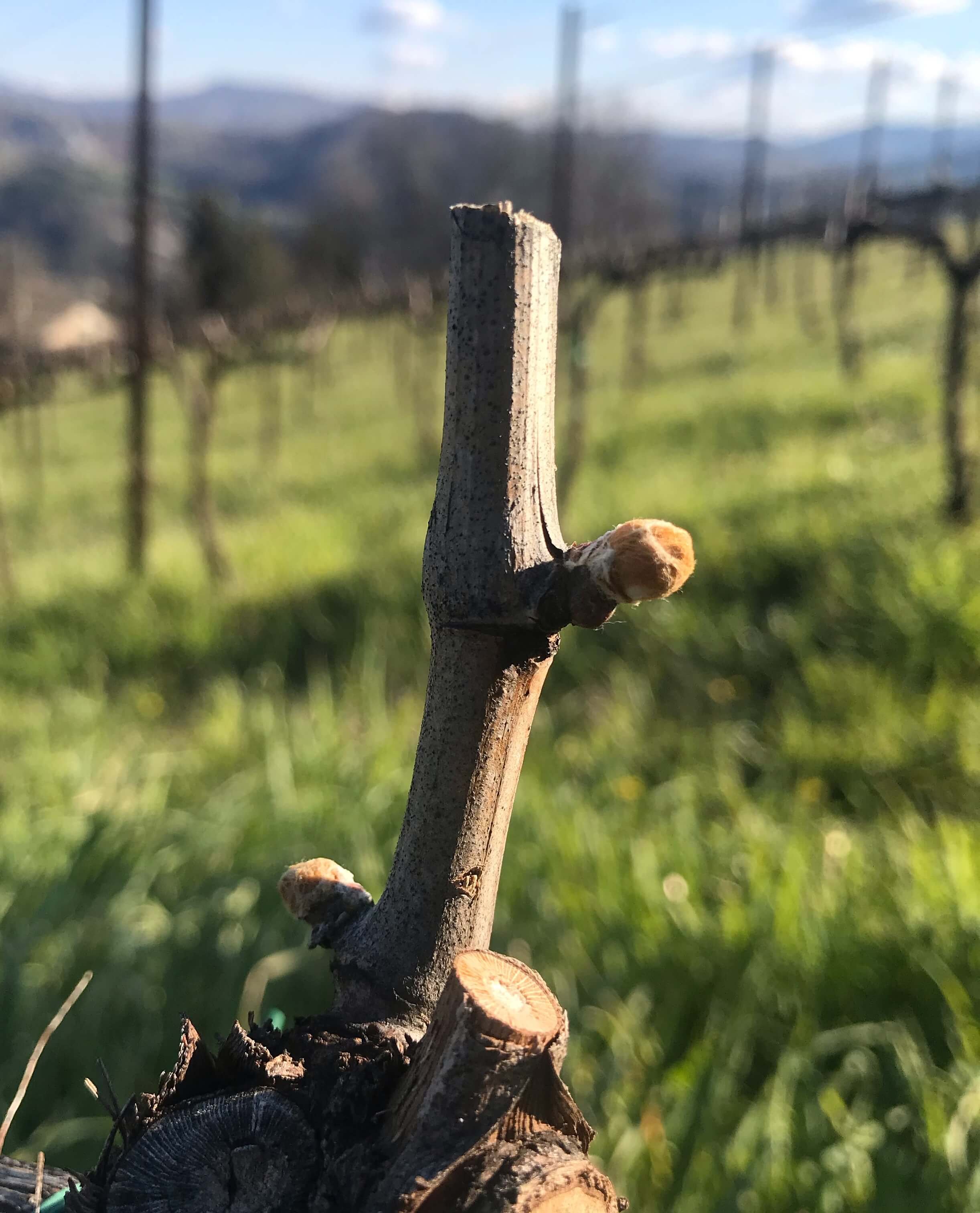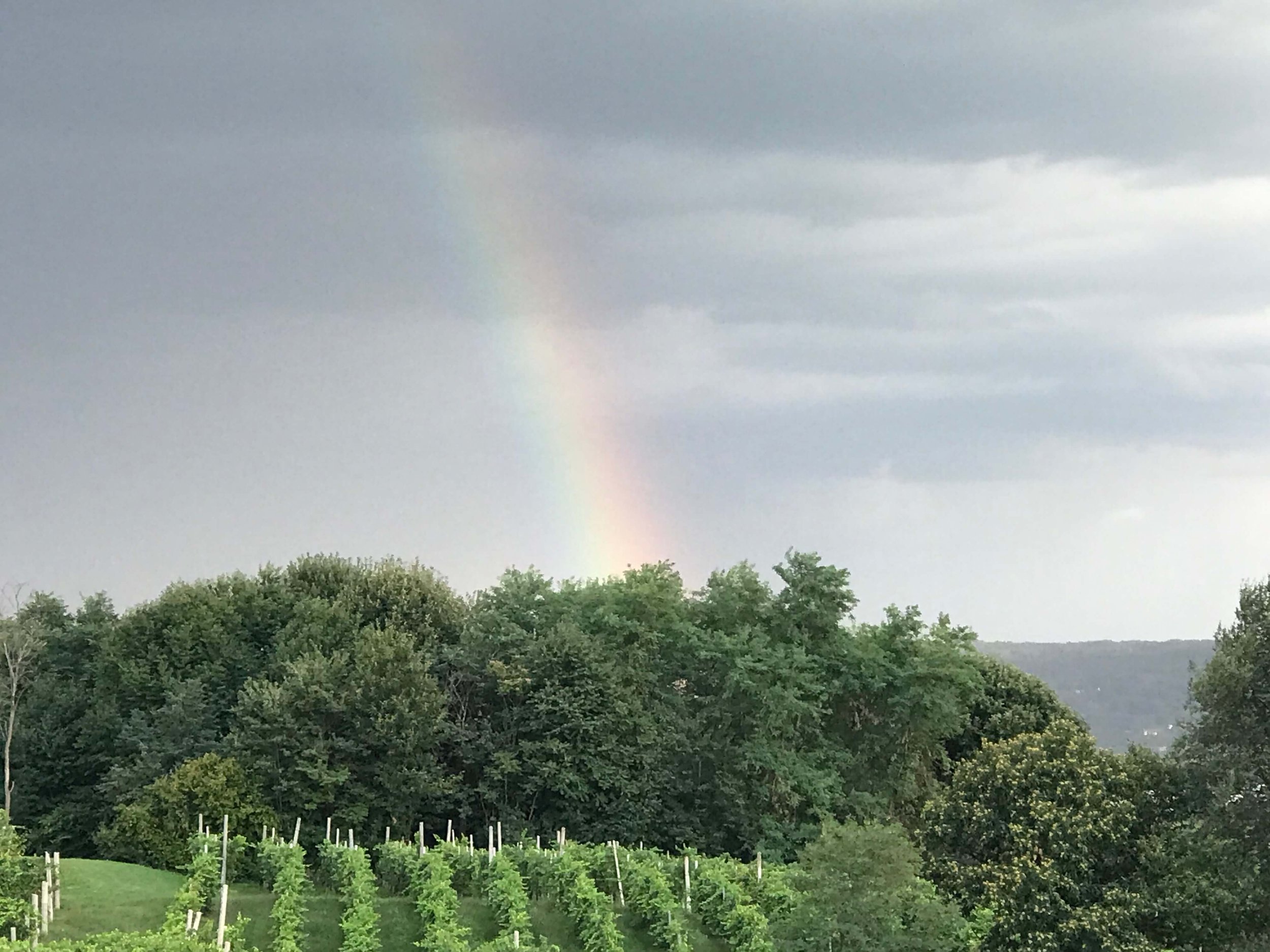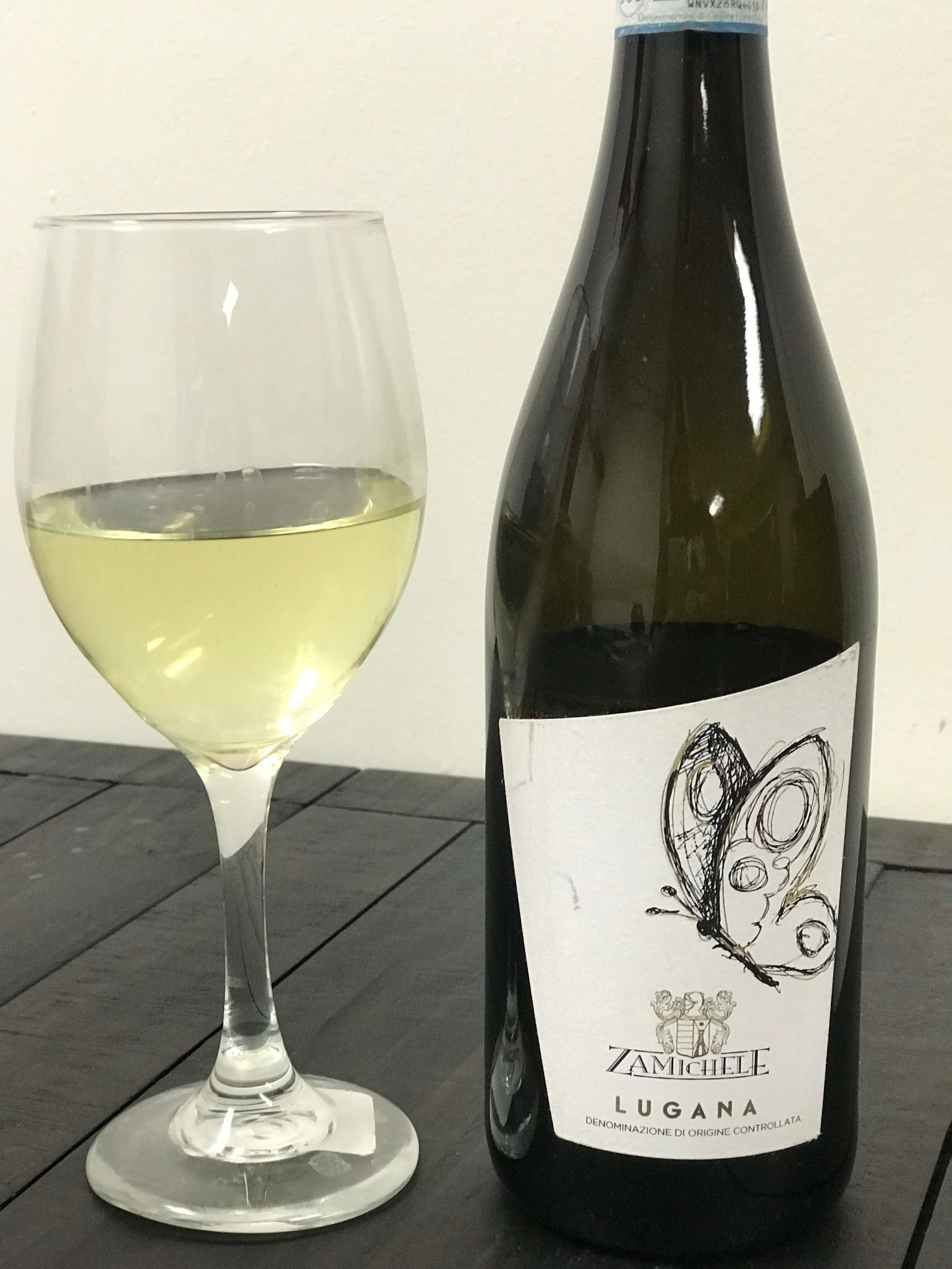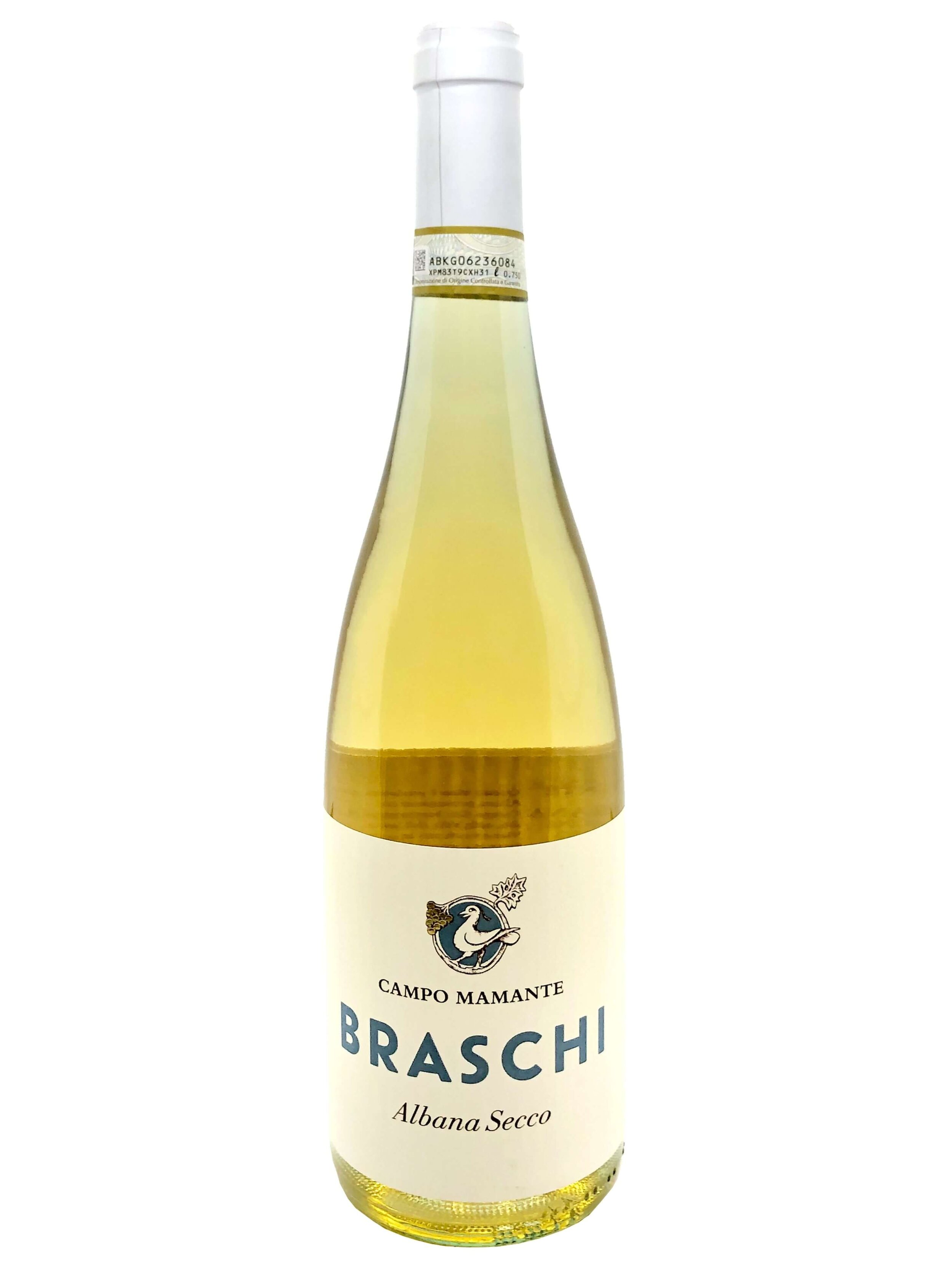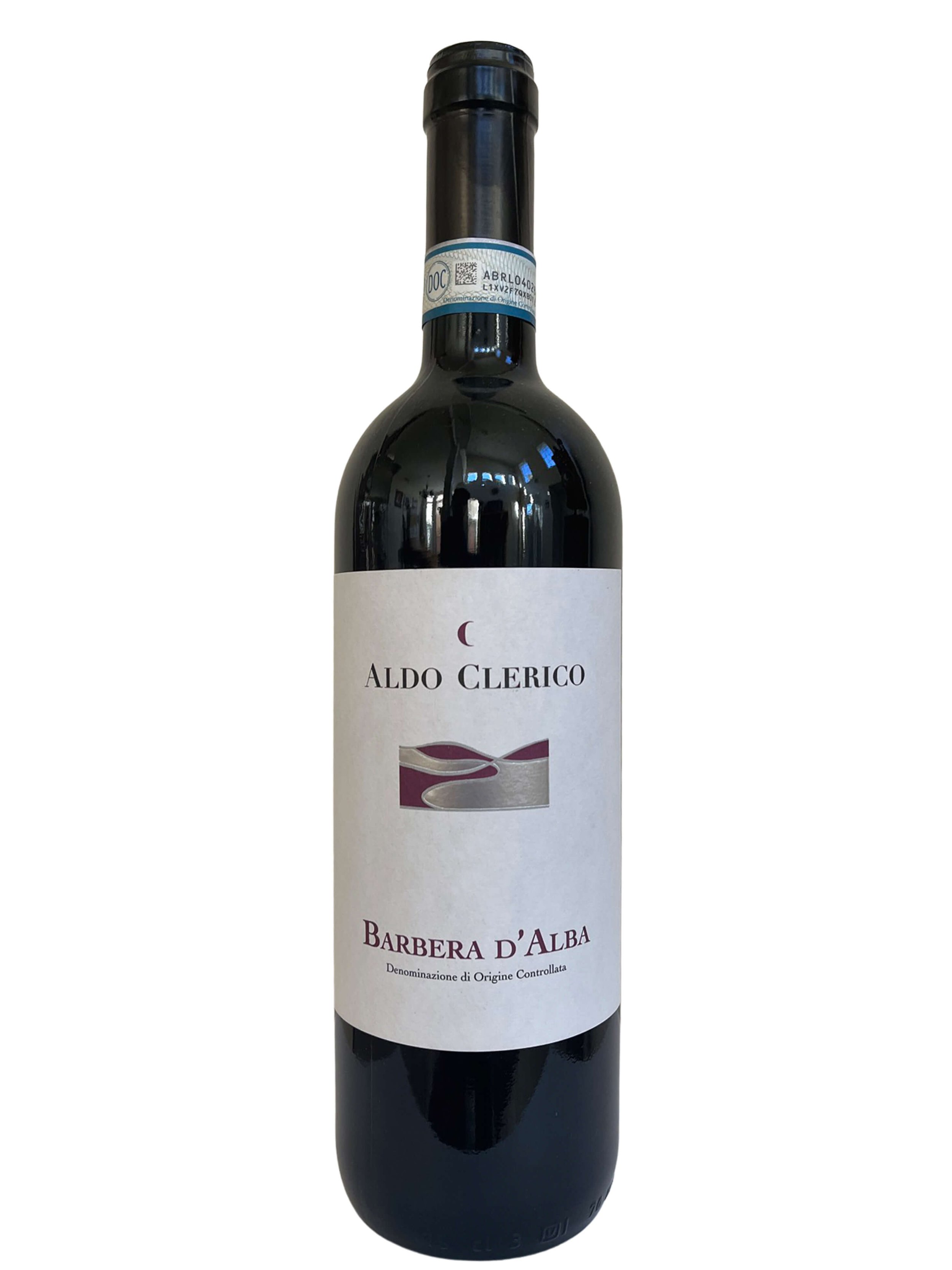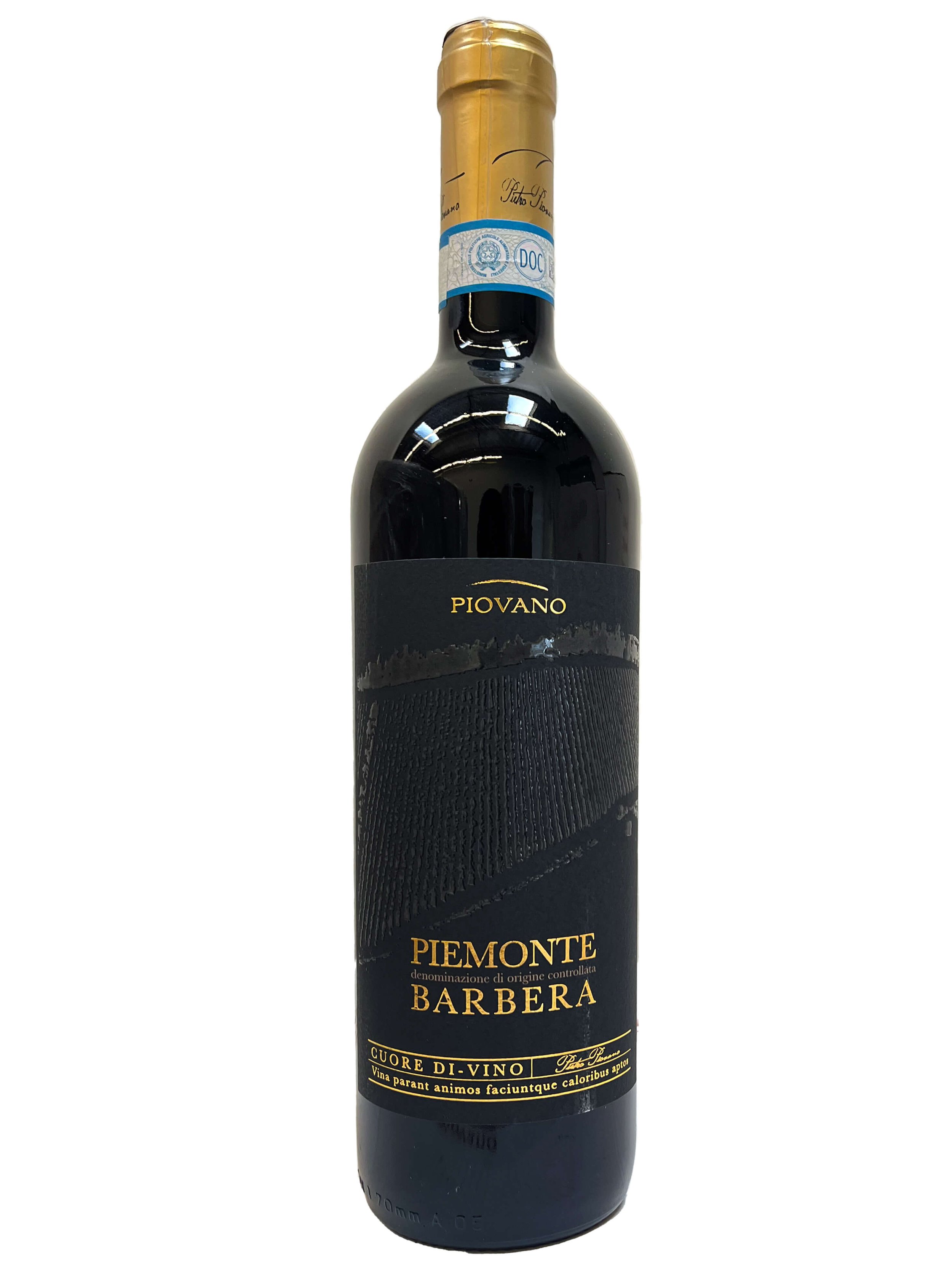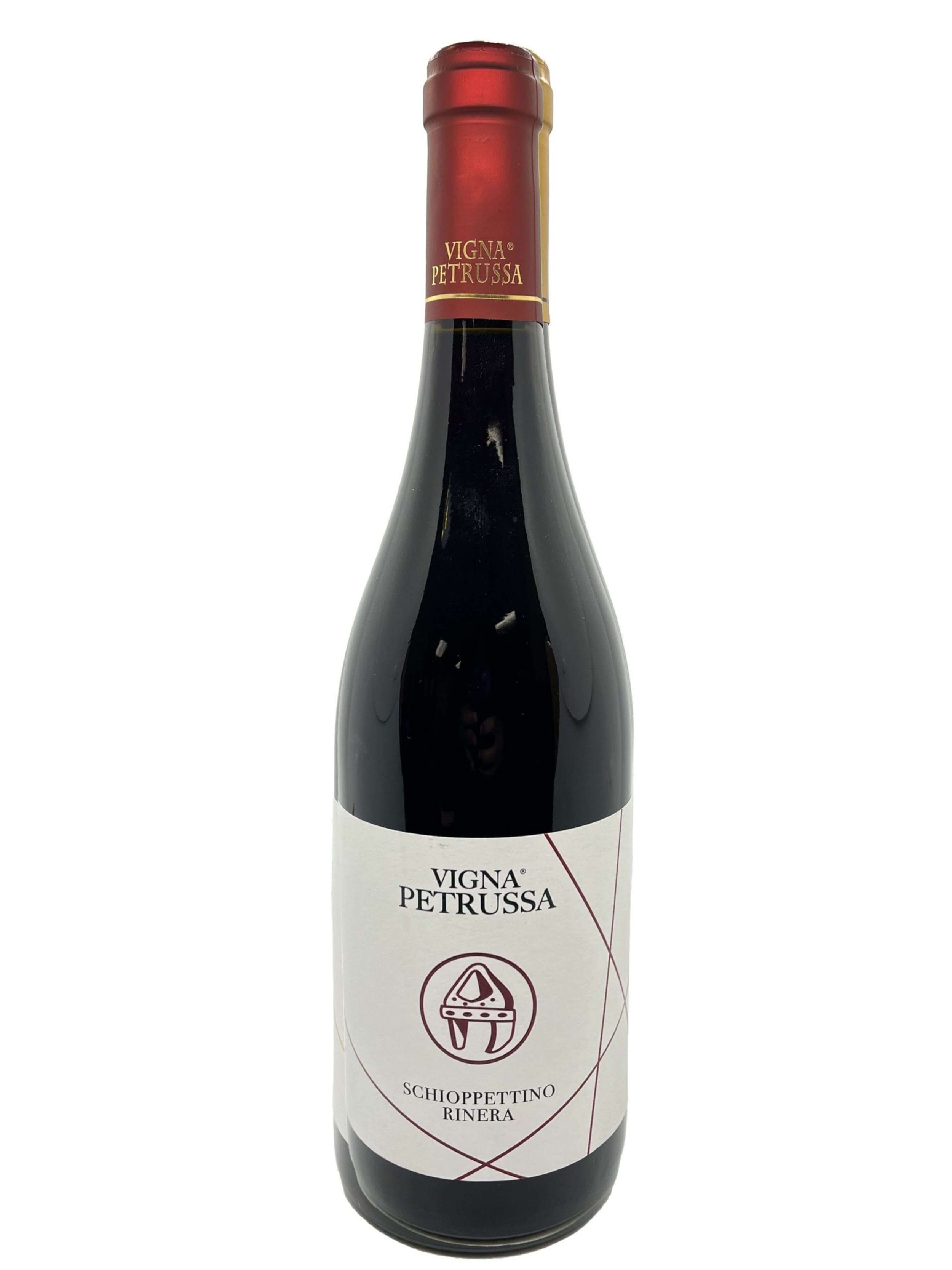Acidity: The Fine Balancing Act in Making Wine
First signs of spring in a Braschi vineyard in hills of Romagna just north of Tuscany.
Look around you while it’s early spring and you see plants and flowers coming to life. You smell earth and rain and see the new beauty of mother nature while still feeling the cold air and dampness which reminds you of this transition period from winter to warmer months.
As it gets warmer, do you find the types of beverages that you choose to drink are different? Do you want something more refreshing?
If so, that urge you’re getting is your brain telling you that you want the refreshing satisfaction that water provides; that signal from the brain for more thirst quenching drinks is what makes us choose more acidic beverages, like lemonade, during warmer months.
Acidity: the Necessary ‘Evil’ in Wine
The same goes for wine. A key element in any wine is its amount of acidity. It’s a natural occurring process of vineyard plant growth. Acidity come from the leaves and is developing in full force during the key growth months of spring and into summer. Then, as the plant matures and it gets closer to harvest, the plant produces less acid. Hence the production of acidity in plants coincides with when we are yearning more refreshing drinks, i.e., in spring and summer. Acidity also helps the plant in disease prevention and gives energy to the vine, so it has a necessary role in sustainable farming as well.
Yet, who really admits to loving acidity? Acidity is like ‘tough love’: it is a necessary ‘ingredient’ yet you don’t want to get too much of it else it’s sour and unpleasant. Most of us Americans (even if we don’t admit to it) prefer ‘sweeter’ drinks. Sourness and bitter flavors are usually frowned upon.
Many times wine experts try to avoid the word acidic when describing a wine since it doesn’t sound appealing. In fact, when learning to become a sommelier in Italy, they use the term ‘fresco’ meaning fresh to assess the level of acidity in a wine: the fresher the wine, the more acidity it has. Leave it to the Italians to set the bar to show a bella figura!
How Wine Experts Assess Acidity
Winemaking is a balancing act between structural components, like acid, with softening components, like fruit and residual sugar.
Think of assessing a wine like an old fashioned balance scale: you want the acidity and other structural elements to balance with the fruit, natural sugars, and ‘softening & refining processes’, often choices of the winemaker, like oak and malolactic fermentation to produce a tasting experience in which the structure harmoniously combines with the softening agents to produce a pleasant sometimes euphoric response. So, if acidity is lacking, a wine will get scored lower by wine experts: they’d call it flabby, which, as you can imagine is not a compliment!
Likewise, chefs who are wine buyers, at least based on our experience, seek out acidity, sometimes also bitterness, in wine - what many American wine drinkers, who are used to sipping on wine without food, would avoid. Instead, chef’s seek out structure because it is necessary if they want the wine to pair with food.
Some wine experts have developed more evolved ways of assessing a wine’s acidity. One is Nick Jackson MW, author of Beyond Flavour: The Indispensable Handbook to Blind Wine Tasting, who has a technique he calls evaluating the ‘shape of acidity.’ The technique involves 3 steps:
1) Once sipping the wine, don’t immediately swallow, and immediately start noticing where you feel the acidity in your mouth
2) then determine the ‘shape’ of the acidity. For example it could be spherical (meaning it is circling around the edge of your mouth like a circle), or it could be linear (meaning it stays on your tongue, at the same level), or the acidity could appear to get more intense as it stays in the mouth, meaning crescendo (likened to the music definition).
3) determine the ‘type’ of the acidity which is the texture or feel of the acidity. For example, it could be prickly (meaning the acidity comes and goes like pin pricks) or smooth (consistent and unwavering)
4) Finally you determine the level of the acidity: low, medium or high.
Nick goes on further to associate these acidity descriptions (shape, type and level) to types of grape varieties, which can then help wine experts to identify wines in blind tastings. This is because the inherent ‘DNA’ of the grape determines how much acidity will be in the wine, barring any process to reduce acidity, like malolatic fermentation. Other factors which impact acidity is the ‘terroir’ or reflecting the place and environmental conditions of the vineyard.
A Smattering of White Wines with Naturally High Acidity
Acidity comes from the leaves which is helped by rain, as here in Valdobbiadene where Col del Balt-Sanzovo estate winery makes artisanal Proseccos.
Why do you think the Glera grape is used to make Prosecco sparkling wine for centuries? It’s because it has naturally high acidity, and winemakers strive for high acidity in sparkling wines (sometimes even by harvesting grapes sooner compared to still wine grape harvest). But also place matters too. As Carlo Sanzovo described in our VeroTalk with him and his brother Fabio, their vineyards in Valdobbiadene are blessed with steepness and soil characteristics that make for structured Prosecco sparkling wines. ‘When you plant Glera in the right clay soils such as those in the “Superiore” region of Valdobbiadene, structure shows up as a bit richer body, balanced acidity and a potential for a sense of minerality,’ as mentioned in our article about Sanzovo’s Col del Balt winery and their Prosecco wines. Likewise, another Vero producer in Valdobbiadene, Eros Zanon, who specializes in natural, Pet Nat wine made from native grapes from his area which he calls the historic area of Prosecco, makes refreshing and complex sparkling wines with great acidity.
Zamichele’s delicious Lugana white wines with the perfect natural balance of acidity and fruit.
In the same region but off to the south east Veneto, and into Lombardy region, is a wine area called Lugana know for fabulous white wines. Like the Prosecco wine region, Lugana is also blessed with a native grape called Turbiana that has naturally high levels of acidity. The, thanks to Lake Garda, just to the north, a large alpine lake which used to be a very large glacier, its soil and climate, of mild winters and temperate summers, create ideal growing conditions for this wine grape that produces age-worthy white wines. Vero is fortunate to have a small family estate as part of our ‘family’: Zamichele. Made up of 2 brothers, Alessandro and Giuseppe Zamichele, their estate used to be a working farm which they turned into a biodynamic sustainable estate winery. When you walk through their vineyards, you find great diversity of nature, from flowers, to insects to animal life. They intentionally do not use tractors so to preserve the natural ecosystem surrounding their vineyards. And their Lugana white wines are to die for! Yes, they have natural acidity but what fruit that balances out so heavenly! They make a fresher, younger steel fermented Lugana as well as a Lugana ‘Riserva equivalent’ which is aged in french oak for 2 years and is definitely a great choice for oaked chardonnay lovers who are seeking an alternative.
Albana has been around certainly at least during the Roman times, with Roman Empress Galla Placidia saying that it is like ‘drinking gold’. Albana is blessed with a thick skin, hence the attractive gold color that it imparts on its wine. In addition, it has a high level of acidity, which is why Galla Placidia loved it as a sweet wine, since the acidity naturally balances out the sugars, making it refreshing and clean. Likewise, as a dry wine, Albana is crisp and fruity with complex candied fruit and saffron aromas and taste. In fact, emphasizing the importance of this grape and wine, Albana is the first DOCG appellation in Italy for a white wine.
Yes, Some Red Wines are High in Acidity Too…
….This is mainly due to the type of grape which imparts high levels of acidity.
The acdity in Barbera, like Aldo Clerico’s Barbera d’Alba, allows it to pair well with a juicy cheeseburger.
Barbera is one. In fact, no surprise that ‘bera’ is part of the name because the acidity in Barbera can be a bear! Ask, Aldo Clerico, who makes delicious monovarietal red wines in the Langhe. It’s his Barbera d Alba that takes the longest to refine, despite at least 1 year aging in oak barrique. But once it’s aged, boy the fruity juiciness of a well made Barbera, like Aldo’s in the Langhe, or Andrea Ivaldi’s Barbera red wines in Nizza Monferrato, such as his Barbera d’Asti, will make you want to keep drinking it. It’s the acidity effect we mentioned before: the brain associates acidity with the refreshing feeling from water. Learn more about the Barbera grape and the fruity & fresh red wines it makes in this article.
Schioppettino (pronounced ski’OH--pet--TEE--noh) is another red grape, like barbera, with high levels of acidity and lower level of tannins. However it’s less known than Barbera: even though it goes back to (at least) the 13th century, it was forbidden to plant in Europe in the 70’s hence it was forgotten about for a while. Thanks to the efforts of passionate, committed local winemakers, like Hilde Petrussa of Vigna Petrussa, schioppettino is ‘on the radar.’ In fact, some sommeliers liken it to the next big thing, likening it to some of the great reds of the Rhone Valley. This could be because schioppettino and syrah are the grapes with the highest level of Rotundone, the same compound found in black and green peppercorn, hence this similarity. Read all about schioppettino in our recent blog article and learn about it directly from the woman who saved the grape, Hilde Petrussa, in our recent VeroTalk.
Nebbiolo has naturally high levels of acidity and tannins, which is why, in the Barolo appellation, it is considered one of the best, age worthy reds in the world. However we want to call out an interesting nebbiolo which is from northern Piedmont, differing from the most commonly found Nebbiolos (Barolos) which from the Langhe, in the southern part of Piedmont. Briamara estate winery is in the north west corner of Italy, in the foothills of the Alps near the French border. Their nebbiolo, called Primaneve, which means first snow, is called that because they leave skin contact for about 2 months, from harvest up through the first snowfall of the winter season. Their vineyards are just south of prestigious Carema DOC with steep vineyards at high altitudes. The pronounced acidity in the nebbiolo is terroir driven for sure, thanks to 500m altitude and colder alpine weather. When tasting Briamara’s Primaneve Nebbiolo you get the sensation of tasting a fruity, delicious cranberry juice made as a wine, along with subtle spices like red peppercorn and vanilla, thanks to 12 months of neutral oak aging.
So, guys, let’s call a fig a fig and embrace acidity! It’s a positive and necessary element to great wine! Try these refreshing ‘acidic’ wines and let us know what you think!

